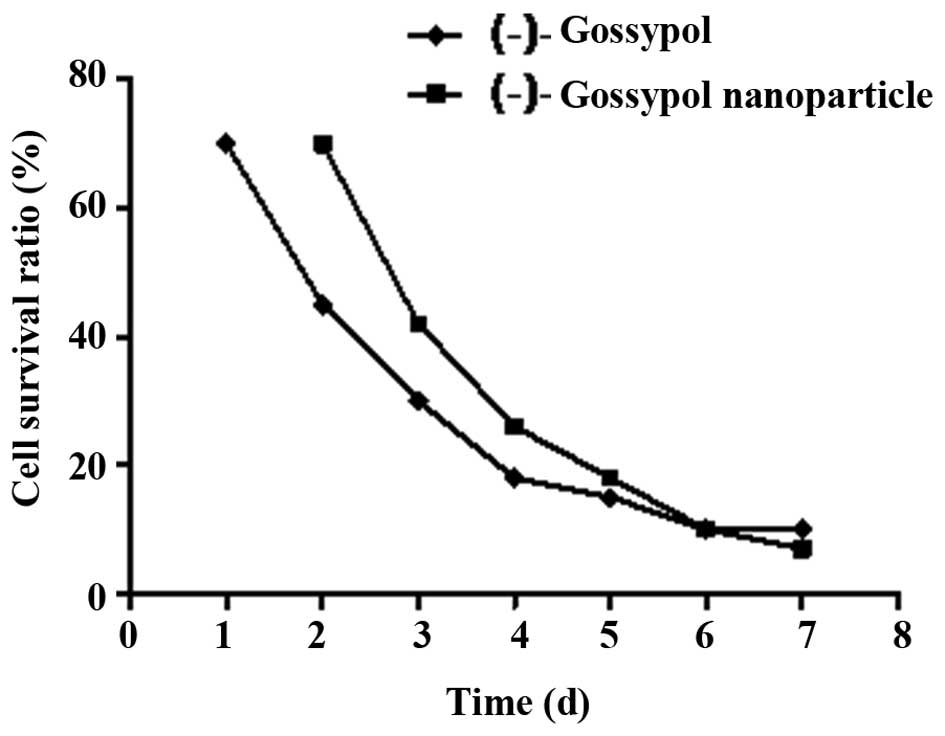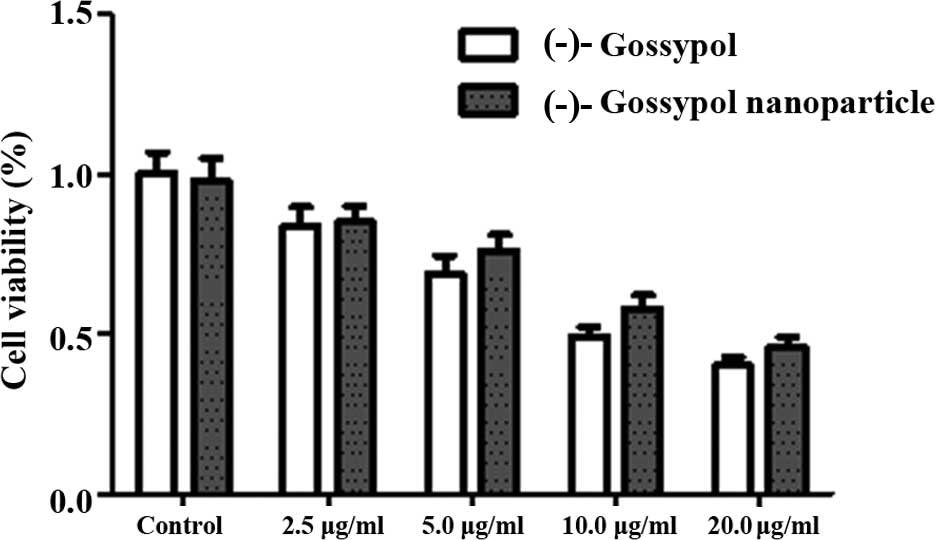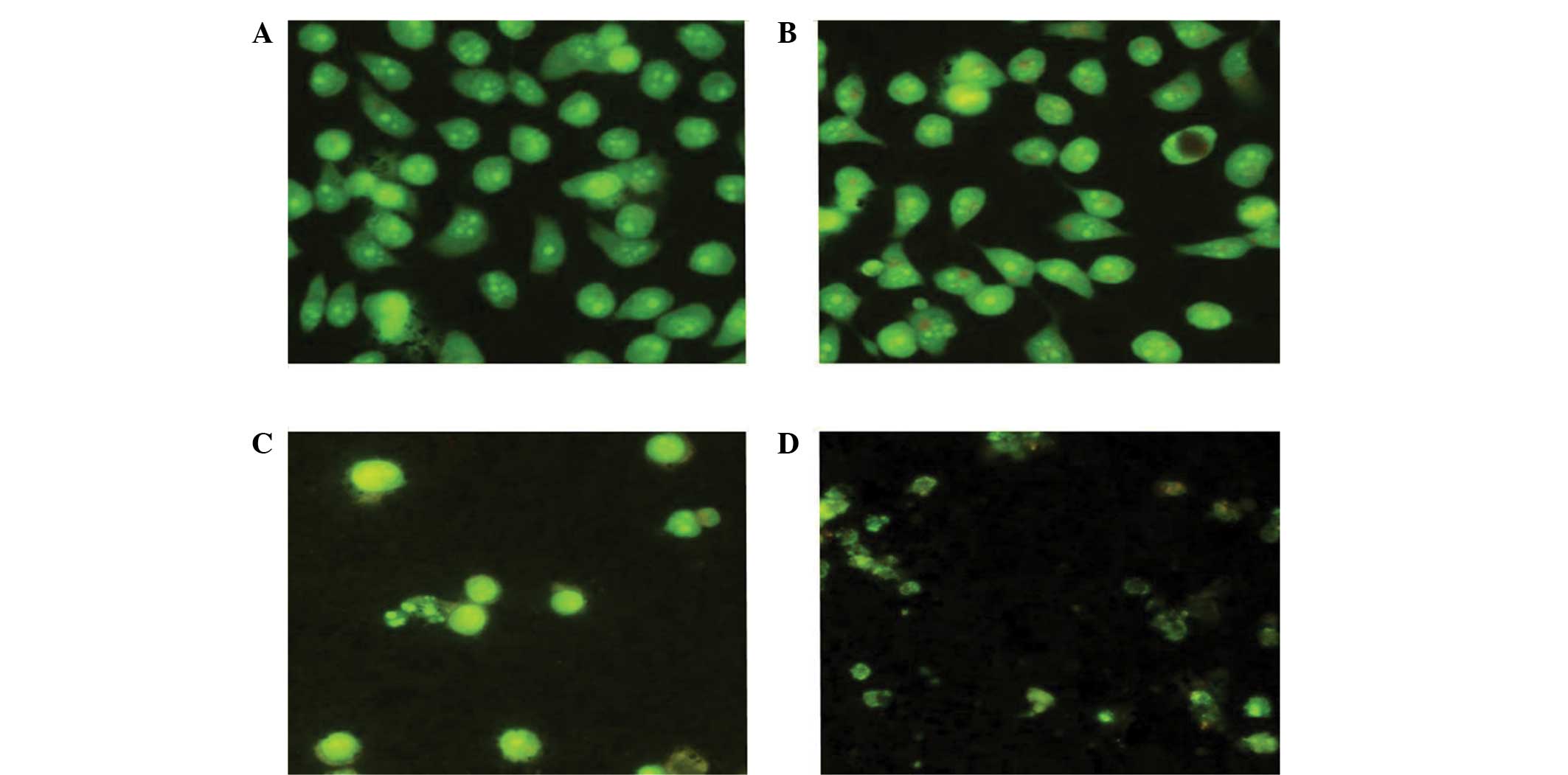|
1
|
Keshmiri-Neghab H and Goliaei B:
Therapeutic potential of gossypol: an overview. Pharm Biol.
52:124–128. 2014. View Article : Google Scholar
|
|
2
|
Wang X, Howell CP, Chen F, Yin J and Jiang
Y: Gossypol - a polyphenolic compound from cotton plant. Adv Food
Nutr Res. 58:215–263. 2009. View Article : Google Scholar
|
|
3
|
Lopez LM, Grimes DA and Schulz KF:
Nonhormonal drugs for contraception in men: a systematic review.
Obstet Gynecol Surv. 60:746–752. 2005. View Article : Google Scholar : PubMed/NCBI
|
|
4
|
Oliver CL, Bauer JA, Wolter KG, et al: In
vitro effects of the BH3 mimetic, (-)-gossypol, on head and neck
squamous cell carcinoma cells. Clin Cancer Res. 10:7757–7763. 2004.
View Article : Google Scholar : PubMed/NCBI
|
|
5
|
Stein RC, Joseph AE, et al: A preliminary
clinical study of gossypol in advanced human cancer. Cancer
Chemother Pharmacol. 30:480–482. 1992. View Article : Google Scholar : PubMed/NCBI
|
|
6
|
Le Blanc M, Russo J, Kudelka AP and Smith
JA: An in vitro study of inhibitory activity of gossypol, a
cottonseed extract, in human carcinoma cell lines. Pharmacol Res.
46:551–555. 2002. View Article : Google Scholar : PubMed/NCBI
|
|
7
|
Kapoor S: Attenuating effect of gossypol
on tumor growth in systemic malignancies. Cell Biochem Biophys.
67:1551–1552. 2013. View Article : Google Scholar : PubMed/NCBI
|
|
8
|
Oliver CL, Miranda MB, Shangary S, et al:
(-)-Gossypol acts directly on the mitochondria to overcome Bcl-2-
and Bcl-X(L)-mediated apoptosis resistance. Mol Cancer Ther.
4:23–31. 2005. View Article : Google Scholar : PubMed/NCBI
|
|
9
|
Meng Y, Tang W, Dai Y, et al: Natural BH3
mimetic (-)-gossypol chemosensitizes human prostate cancer via
Bcl-xL inhibition accompanied by increase of Puma and Noxa. Mol
Cancer Ther. 7:2192–2202. 2008. View Article : Google Scholar : PubMed/NCBI
|
|
10
|
Mohammad RM, Wang S, Aboukameel A, et al:
Preclinical studies of a nonpeptidic small-molecule inhibitor of
Bcl-2 and Bcl-X(L) [(-)-gossypol] against diffuse large cell
lymphoma. Mol Cancer Ther. 4:13–21. 2005. View Article : Google Scholar : PubMed/NCBI
|
|
11
|
Wolter KG, Wang SJ, Henson BS, et al:
(-)-Gossypol inhibits growth and promotes apoptosis of human head
and neck squamous cell carcinoma in vivo. Neoplasia. 8:163–172.
2006. View Article : Google Scholar : PubMed/NCBI
|
|
12
|
Zhang XQ, Huang XF, Mu SJ, et al:
Inhibition of proliferation of prostate cancer cell line, PC-3, in
vitro and in vivo using (-)-gossypol. Asian J Androl. 12:390–399.
2010. View Article : Google Scholar : PubMed/NCBI
|
|
13
|
Wang WT, Huang XF, Mu SJ, et al: Study on
the effects of (-)-gossypol in inducing apoptosis of human prostate
cancer PC-3 cells in vitro. Xian Dai Zhong Liu Yi Xue. 12:251–254.
2011.(In Chinese).
|
|
14
|
Allen TM and Cullis PR: Drug delivery
systems: entering the mainstream. Science. 303:1818–1822. 2004.
View Article : Google Scholar : PubMed/NCBI
|
|
15
|
Zhang SX and Li QF: Application on
nano-scale drug vehicles in cancer therapy. Zhong Hua Zhong Liu
Fang Zhi Za Zhi. 17:1031–1034. 2010.(In Chinese).
|
|
16
|
Agarwal A, Saraf S, Asthana A, et al:
Ligand based dendritic systems for tumor targeting. Int J Pharm.
350:3–13. 2008. View Article : Google Scholar
|
|
17
|
Gabizon AA: Pegylated liposomal
doxorubicin: metamorphosis of an old drug into a new form of
chemotherapy. Cancer Invest. 19:424–436. 2001. View Article : Google Scholar : PubMed/NCBI
|
|
18
|
Kaza N, Kohli L, Graham CD, et al: BNIP3
regulates AT101 [(-)-gossypol] induced death in malignant
peripheral nerve sheath tumor cells. PLoS One. 9:e967332014.
View Article : Google Scholar
|
|
19
|
Chawla JS and Amiji MM: Biodegradable
poly(epsilon-caprolactone) nanoparticles for tumor-targeted
delivery of tamoxifen. Int J Pharm. 249:127–138. 2002. View Article : Google Scholar : PubMed/NCBI
|
|
20
|
Oyewumi MO, Yokel RA, Jay M, et al:
Comparison of cell uptake, biodistribution and tumor retention of
folate-coated and PEG-coated gadolinium nanoparticles in
tumor-bearing mice. J Control Release. 95:613–626. 2004. View Article : Google Scholar : PubMed/NCBI
|
|
21
|
Xu L, Wang G, Tang N, et al: 27th Annual
The Charles A. Coltman, Jr. San Antonio Breast Cancer Symposium:
Discovery and therapeutic potential of novel Bcl-2/Bcl-xL
small-molecule inhibitors in human breast cancer. Breast Cancer Res
Treat. 88(1 Suppl): S662004.
|













